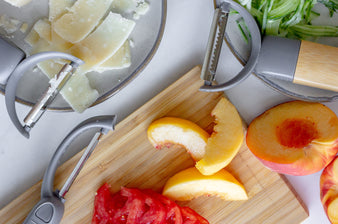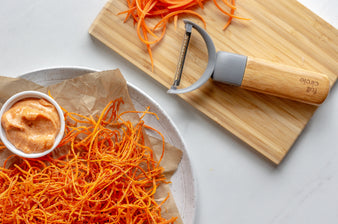What’s One Way We’re Similar to Panda Bears?
What’s one way we’re similar to panda bears? Well, we’re both craving bamboo.
No, we don’t plan on having an afternoon bamboo snack, but we do plan on continuing to use it in the majority of our products. If you’ve seen bamboo in action, you might understand why.
It’s not called a “Regenerative Powerhouse” for nothing. Bamboo—which is surprisingly grass, not a tree—is regenerative, which means that it can regrow itself. When we harvest it for things like our Be Good dish brush, the bamboo can keep doing what it does best—growing tall and strong.
In fact, bamboo is stronger than steel. And even though it can grow up to three feet in 24 hours, it requires very little in the way of water or fertilizer because it supplies its own nutrients through its falling leaves.
As one of Earth’s favorite materials, bamboo also releases 30% more oxygen than other plants (good for us) and it captures more carbon from the atmosphere (great for the planet).
Still bamboozled by our obsession with bamboo? Let’s compare it to some similar materials then:
- Beech wood may look nice but it takes a whopping three decades to fully mature. In just four days, bamboo grows as much as beech does in an entire year.
- Acacia wood is more dense than bamboo and much heavier to transport. Transportation is the second largest source of CO2 emissions, so a lighter load has a lighter impact on our planet.
- The elegantly beautiful teak wood grows fast like bamboo but is endangered—and is actually illegal to purchase in some areas of the world.
So, there’s really no better option than bamboo. It is the only woody plant that can keep up with human (and panda) consumption and until we find something even more sustainable, expect to continue seeing it in our products.




